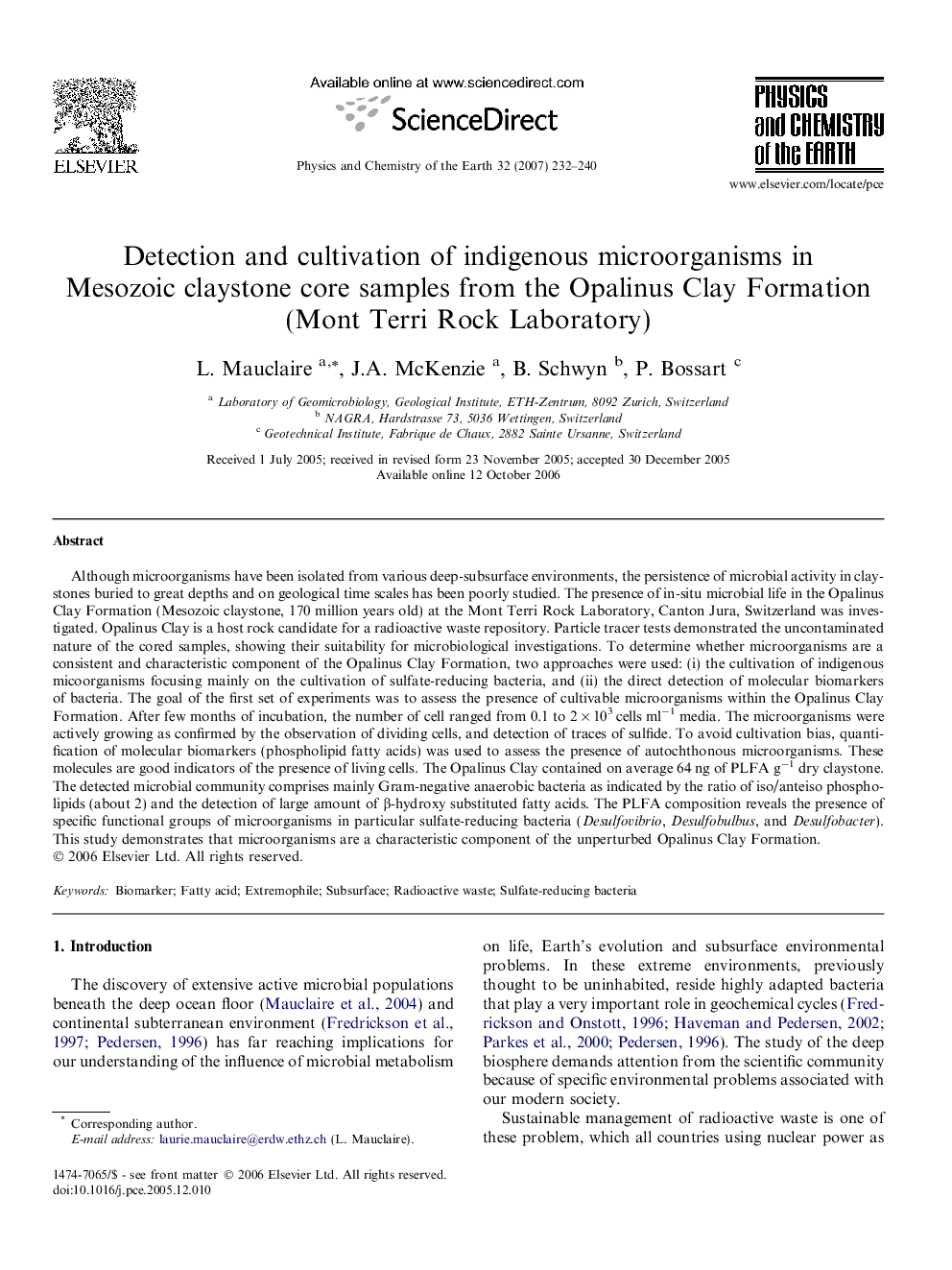| کد مقاله | کد نشریه | سال انتشار | مقاله انگلیسی | نسخه تمام متن |
|---|---|---|---|---|
| 4721924 | 1639405 | 2007 | 9 صفحه PDF | دانلود رایگان |

Although microorganisms have been isolated from various deep-subsurface environments, the persistence of microbial activity in claystones buried to great depths and on geological time scales has been poorly studied. The presence of in-situ microbial life in the Opalinus Clay Formation (Mesozoic claystone, 170 million years old) at the Mont Terri Rock Laboratory, Canton Jura, Switzerland was investigated. Opalinus Clay is a host rock candidate for a radioactive waste repository. Particle tracer tests demonstrated the uncontaminated nature of the cored samples, showing their suitability for microbiological investigations. To determine whether microorganisms are a consistent and characteristic component of the Opalinus Clay Formation, two approaches were used: (i) the cultivation of indigenous micoorganisms focusing mainly on the cultivation of sulfate-reducing bacteria, and (ii) the direct detection of molecular biomarkers of bacteria. The goal of the first set of experiments was to assess the presence of cultivable microorganisms within the Opalinus Clay Formation. After few months of incubation, the number of cell ranged from 0.1 to 2 × 103 cells ml−1 media. The microorganisms were actively growing as confirmed by the observation of dividing cells, and detection of traces of sulfide. To avoid cultivation bias, quantification of molecular biomarkers (phospholipid fatty acids) was used to assess the presence of autochthonous microorganisms. These molecules are good indicators of the presence of living cells. The Opalinus Clay contained on average 64 ng of PLFA g−1 dry claystone. The detected microbial community comprises mainly Gram-negative anaerobic bacteria as indicated by the ratio of iso/anteiso phospholipids (about 2) and the detection of large amount of β-hydroxy substituted fatty acids. The PLFA composition reveals the presence of specific functional groups of microorganisms in particular sulfate-reducing bacteria (Desulfovibrio, Desulfobulbus, and Desulfobacter). This study demonstrates that microorganisms are a characteristic component of the unperturbed Opalinus Clay Formation.
Journal: Physics and Chemistry of the Earth, Parts A/B/C - Volume 32, Issues 1–7, 2007, Pages 232–240